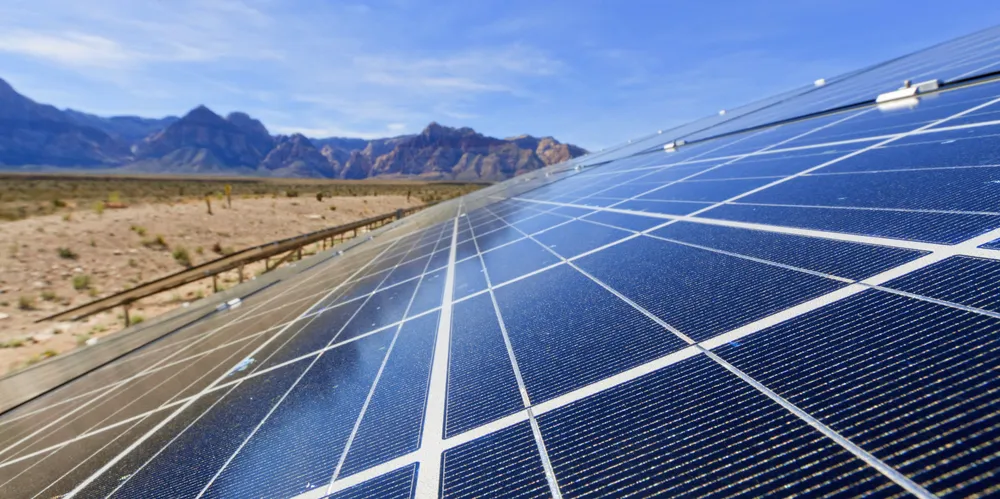US set for record 2023 solar build with utility-scale segment's 86% gain growth engine: SEIA
Greater availability of cheap imported modules is facilitating development of projects and helping cost-competitiveness of solar

The US will install about 33GW of solar capacity in 2023, easily the industry’s best annual performance, led by the utility-scale segment benefitting from fewer module supply constraints that severely suppressed activity last year, according to a new report by Solar Energy Industries Association (SEIA) and Wood Mackenzie.
“Solar remains the fastest-growing energy source in the United States, and despite a difficult economic environment, this growth is expected to continue for years to come,” said SEIA CEO Abigail Ross Hopper.
“To maintain this forecasted growth, we must modernise regulations and reduce bureaucratic roadblocks to make it easier for clean energy companies to invest capital and create jobs,” she added.
Solar accounted for 48% of all new US electricity generating capacity added to the grid this year through 30 September.
Additions of 33GW on a direct-current basis would represent a 55% increase from 2022. This is being fueled by strong market demand here and a 10-15% decline in US module prices through the first three quarters of this year because of global oversupply.
Larger import volumes of cheaper modules – the US heavily depends on Southeast Asia for supply – facilitated advancement of projects and made solar more cost-competitive, particularly grid-scale which is the main industry driver.
The US will install 23GW of utility-scale capacity this year, up 86% from 2022, it forecasts.
Those impacts resulted from tough US Customs and Border Protection (CBP) enforcement of the Uyghur Forced Labour Prevention Act (UFLPA) which took effect in June last year.
The law addresses alleged human rights abuses in China’s Xinjiang region, a major global supply source for polysilicon, cells, and other critical components in solar panels. China has denied allegations of forced labour.
Importers are now more efficient at providing proper documentation to comply with the law’s rigorous requirements. This enables them to rebut the presumption that any product using inputs from Xinjiang benefited from forced labour.
The report notes that less than one-tenth of 1% of US module imports this year have come from China due to a combination of tariffs. Almost 80% of modules for the US utility-scale market come from Southeast Asia, manufacturers there are exposed to UFLPA restrictions on polysilicon sourcing from China.
The US solar industry outlook remains strong with 10% growth in 2024 and averaging 14% annually over the next five years, according to the report. Sustaining growth longer-term will be an increasing challenge.
“Growth is expected to be slower starting in 2026 as various challenges like interconnection constraints become more acute,” said Michelle Davis, lead author of the report and head of solar research at Wood Mackenzie.
“It’s critical that the industry continue to innovate to maximize the value that solar brings to an increasingly complex grid. Interconnection reform, regulatory modernization, and increasing storage attachment rates will be key tools,” she added.
Solar represents at least 60% of roughly 1.8TW of clean energy projects seeking interconnection in grid queues.
The industry is also keeping a close eye on present bottlenecks that could grow worse over time. One is procurement of high-voltage circuit breakers and transformers with lead times for these items having increased to an average of 115 to 130 weeks and 60 to 160 weeks, respectively.
“Higher lead times have significantly impacted project development in the near term, with many developers rushing to secure these components,” said the report.
Another is limited engineering, procurement, and construction (EPC) availability that is negatively impacting project timelines.
One issue behind the constraints is lack of trained personnel and administrative complexity related to meeting prevailing wage and apprenticeship requirements for projects to access full value of federal tax credits available in the 2022 climate law.
Developers are getting hit “harder than originally expected,” said the report, referring to the stipulation they pay prevailing wages, which can be higher for workers belonging to unions, a constituency being courted by President Joe Biden in his 2024 reelection bid.
EPC companies are also “adapting” to apprenticeship requirements for project tax credit eligibility, “which has increased their administrative burden,” said the report, alluding to added costs.
Wood Mackenzie now forecasts that utility-scale solar installations will total 171GW between 2023 and 2028, up 1% from an estimate earlier this year.
(Copyright)